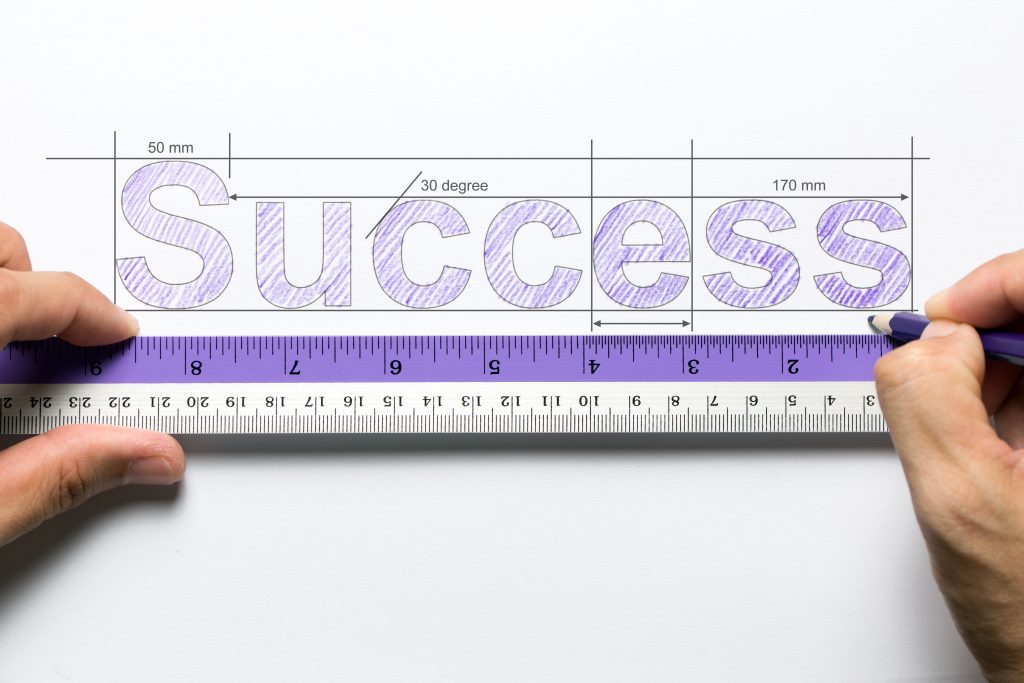Continuous Improvement as the name suggests, is about the constant and improving process. It’s like when climbing the stairs in a building, normally you have one step at a time to the top. Organizations apply this strategy in the quest to improve methodologies, eliminate non-added values, and develop superior goods and services for the end-users. With continuous improvement, organizations can see gradual changes and make several little changes that will eventually result in a big change in the long run.
In the broad sense, the goal of continuous improvement is to increase the amount of profitability as a result of enhancement of the flow of operations. Various operations within a firm need to be optimized so that different functions can be brought under one roof and the company will be able to cut wastage while enhancing productivity. This attention leads to operational excellence, which is a condition in a given business where all functional areas are aligned to the achievement of organizational objectives.
Understanding Continuous Improvement
Continuous improvement is where every little process in an organization leads to constant improvement. It is the attitude of constantly seeking how things could be done better, not only in various products but also in procedures, as well as the efficiency of working in a team.
Kaizen is translated as continual improvement, which implies that several adjustments and advancements are made at periodic intervals to the processes, goods, or services. Unlike other organizations that wait for large problems to occur, organizations that practice continuous improvement are constantly seeking methods that work better, are quicker, and have fewer defects.
How does Continuous improvement work?
In practice, continuous improvement is a rank-and-file program including all personnel in the company. It is not only the case of managers making the decisions – it is also of the employees contributing the ideas, implementing them and seeing which of them creates the most impact. Such a model lets firms remain adaptive and be ready to respond to new conditions of business environments.
Principles and Practices of Continuous Improvement
Continuous improvement is based on a few key principles that guide how companies approach making things better:
- Kaizen Philosophy: A Japanese term, translated as “progressive and sustained improvement”, it focuses on building constant progress rather than large step-changes.
- PDCA Cycle: PDCA is a procedure of trying out ideas and testing an idea on the field to observe the result of its implementation and make necessary changes if necessary.
- Employee Involvement: The capacity for ideas for improvement is encouraged in the bar from the lowest employee to the highest. This fosters a system of creativity and teamwork.
Continuous Improvement for Product Design
One of the many fields that have enjoyed the benefits of day-by-day improvement is that of product design. Through the continuous improvement of the design process, the organization achieves more innovative products, but at the same time less expensive to manufacture and maintain. This results in optimal usage by the customers as well as increased satisfaction rates among the users.
How does Continuous improvement create added value to the product design?
In product design, continuous improvement implies the enhancement of the design process to develop products that are better in terms of efficiency, utility use, and cost. Here’s how it benefits product design:
- Iterative Design: The process of creating and evaluating a product for its feasibility to meet the requirements of the market populated by users.
- Incorporating Lean Principles: Applying lean manufacturing eliminates waste and concentrates on decreasing the period for taking a product to market.
- Agile Development: The incorporation of new working systems and practices referring to agile methodologies promotes the fast adaptation of product designs in response to customers’ dynamic requirements or market shifts.
The incorporation of Lean Principles to enhance efficiency
Applying lean principles to product design focuses on eliminating waste and optimizing processes:
- Streamlined Processes: Eliminating or minimizing the different processes that a certain product has to go through shortens the time that is needed to complete the development of the product.
- Cost Efficiency: Waste costs can be severe and therefore minimizing waste in the materials, time and resources would be of benefit to the companies in cutting short their costs and thus making high profits.
Agile Development for Flexibility
Agile methodologies enable teams to respond quickly to changes and deliver value iteratively:
- Adaptive Planning: The use of agile entails that changes can be made when designing since new information can be processed and changes in the market conditions addressed.
- Incremental Releases: Software programs are delivered incrementally and in rather small, more easily digestible portions so that further enhancement is feasible, contingent on the reception that is given to a particular version.
Leveraging MVP Concepts
Developing a Minimum Viable Product (MVP) helps in testing core product features and gathering early feedback:
- Early Validation: They help to prove hypotheses regarding a product and adjust them, if necessary, at the early stages of technological venturing.
- Iterative Enhancements: It will be seen that with the help of receiving feedback from MVP users, they can bring improvements toward the products which indicates that they would meet market requirements satisfyingly.
Lean Six Sigma for Operational Excellence
It is a technique of searching for and eliminating the root causes of defects and implementing changes that will enhance the procedure.
Lean Six Sigma works as a framework for Operational Excellence:
- Enhancing Product Design: The integration of Lean Six Sigma in product design plays a critical role in helping organizations reduce development time, shorten the new product development time and enhance product quality. Repetition emphasizes that every product must be built to fulfil the customer’s needs and wants, with minimal defects.
- Driving Profitability: Lean Six Sigma is a set of methodologies that enable firms to improve their performance and cut costs by eradicating inefficiencies in people’s working patterns. Savings promote a high likelihood of increasing profitability, which decreases the vulnerability of any organization.
- Achieving Total Cost of Ownership (TCO): Due to the principles of efficiency, aiming at quality improvement and the elimination of unnecessary waste, Lean Six Sigma allows for the reduction of the overall cost of products and services. It applies the concept of total cost which encompasses both capital investments, as well as all costs of operation and maintenance throughout the project’s lifecycle.
If you are interested in learning more about Lean Six Sigma, head over to our Lean Six Sigma for Operational Excellence
Change Management as a Component of Strategic Integration
- Driving Cultural Shift: For Lean Six Sigma to be achieved it is essential to incorporate change to facilitate the enhancement of organizational culture; employee involvement, training of people and the organization’s objectives which in conjunction with the Lean Six Sigma objectives are crucial in maintaining Lean Six Sigma.
- Continuous Improvement Culture: Maintaining and institutionalizing Lean Six Sigma creates continuous success in the organization. Through suggestion schemes, ideas are promoted and valued among employees as well as employees are given autonomy on how to solve problems, which eventually leads to innovation in organizations.
Strategic planning, therefore, forms the basis for attaining the firm’s profitability and sustainability. Through the implementation of continuous improvement and regarding the design of product functions and performance, an organization can manage its problematic areas, take advantage of opportunities for better development, and obtain the expected results.
If you want to dive deep into change management and know how it helps businesses, you can learn more here – How Change Management Boosts Continuous Improvement and Operation Excellence
Strategic Planning for Profitability and Long-Term Success
It is crucial to strategize bearing in mind that it will lead the company to profitability and it will ensure sustainability.
Importance of Strategic Planning
- Aligning Resources: Managing organizational resources, or other common assets discussed in the previous chapters- can help organizations get maximum results with minimum amounts of money, time, or human resources required.
- Setting Direction: Strategic planning is the identification of direction for the organization and the course of action by which that direction will be achieved. This guarantees that most of the decisions and other actions made are in line with general business objectives such as the profits to be made and efficient operations.
Integrating Continuous Improvement
- Enhancing Product Design: Strategic management links Continuous Improvement efforts to the organization’s structure. This encompasses such areas as iteratively improving the looks, features, attributes, and value proposition to customers, improving quality through tools such as Lean Six Sigma, and cutting costs to hike profits.
- Adapting to Change: Strategic planning enables businesses to be prepared if the market slows down, recapitalization or there are new inventions in technologies, or shifts in customer preferences happen. They establish flexibility and adaptability, which are vital for achieving sustainability in dynamic environments.
Having identified the major concepts of the strategic direction, the following have been deemed as major elements of strategic planning:
- Goal Setting: Set goals as specific, measurable, achievable, relevant, and time-bound concerning the organization’s mission and vision statements.
- Market Analysis: Carry intensive market analysis to determine the industries, customers, and competitors dynamics.
- Risk Management: Analyze threats and threats and find ways to avoid them to protect profitability and organizational business.
- Employee Involvement: Implement strategies that would allow the development of the bottom-up approach to accomplishing the established strategic goals and objectives.
- Leadership Commitment: Involve leaders and stakeholders in bringing to focus the strategic initiatives to encourage the support of every member of an organization.
Importance of Cost Reduction in Strategic Planning
- Enhancing Profitability: Cutting on the expenses that relate to product development, production and operations, makes it possible to boost the profit margins of the companies thereby improving their financial standings.
- Competitive Advantage: Low cost also favors better prices in the market hence more consumer pull or market share.
Importance of Total Cost of Ownership (TCO) in Strategic Planning
TCO includes any direct and indirect costs incurred while attaining, using, and disposing of any product or service. This entails acquisition cost, cost of maintaining the equipment, operating cost, and the administrative costs of eventually disposing of the equipment.
Strategic Considerations
Understanding TCO enables organizations to make the right decisions on investment, products and services and even operations strategies. It gives a complete outlook of the expenditure excluding the cost of acquisition.
Continuous improvement role in TCO
- Optimizing Processes: The management programs which include Lean Six Sigma are concerned with enhancing and making a change in the organizational processes that would positively lead to enhanced productivity, minimization of cost of operations, and eradication of wastage.
- Lifecycle Cost Management: By conducting a TCO analysis at the development stage of a product as well as the later phases, businesses avoid significant expenses in the future and receive maximal ROI.
If you want a deep dive at profitability and long-term success in business with strategic planning, you may read it here Strategic Planning for Profitability and Long-Term Success
The concepts of improvement and effective cost-cutting, as well as, comprehensive operational management are viewed to be vital for attaining product design success and operational effectiveness. Lean Six Sigma for instance, and the adaptation of change management principles enables organizational to create the needed innovation and effectiveness across the course of their operations. In this way, not only is the product quality and customer satisfaction improved, but profitability and long-term development are ensured as well.
Thus, operational excellence is not about cost takeout – whereas it is a critical component, it is about systematically strengthening and improving each link in the product, service delivery, and disposal chain. Including Total Cost of Ownership (TCO) in decision-making makes business entities make informed decisions that are gains grounded in the long term. Therefore, when optimizing strategic planning, and utilizing continuous improvement efforts, organizations are positioned for success, market readiness and business vulnerability.
![The-Profit-Engineer-[NEW]-re-design](https://theprofitengineer.nl/wp-content/uploads/2023/08/The-Profit-Engineer-NEW-re-design-logo-2023-horizontal-original.png)




